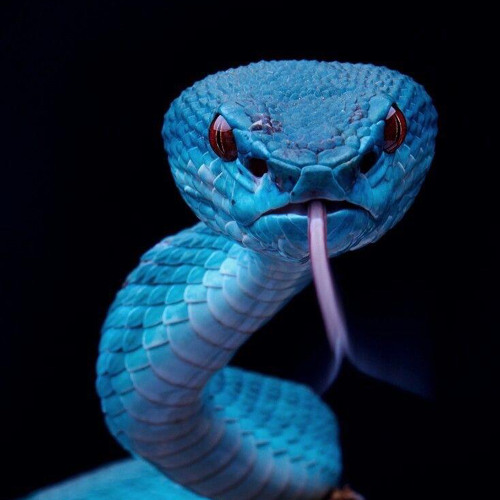The Blue Snake: Rare, Mysterious, and Fascinating

The Blue Snake is one of the most visually stunning reptiles, known for its captivating blue hue. Though rare, it can be found in certain tropical and subtropical regions around the world. This elusive serpent not only captures the attention of herpetologists but also fascinates nature enthusiasts due to its striking appearance and mysterious behavior. In this article, we delve into the world of the Blue Snake, exploring its habitat, diet, reproduction, and more.
The Appearance of the Blue Snake
As its name suggests, the Blue Snake is famous for its unique, iridescent blue scales. This coloration is uncommon in the animal kingdom, making the Blue Snake a rare sight. Depending on the species, some Blue Snakes have deeper blue shades, while others exhibit lighter, more pastel-like colors. The scales often shimmer in the light, giving the snake a dazzling appearance. This blue coloration helps the snake blend into its surroundings, particularly in tropical environments where it camouflages among the foliage and shadows.
Habitat and Distribution
Blue Snakes are typically found in tropical and subtropical regions, where they thrive in humid and warm conditions. They are most commonly seen in countries with dense forests, such as parts of Southeast Asia, Central and South America, and certain Pacific islands. The Blue Snake often prefers habitats with abundant cover, such as rainforests, woodlands, and sometimes mountainous terrains.
Their ability to camouflage effectively in the wild helps them evade predators and ambush their prey. These snakes are primarily terrestrial, though some species may occasionally climb trees or shrubs in search of food or shelter.
Diet and Hunting Techniques
The Blue Snake is a carnivorous predator, and its diet mainly consists of small mammals, birds, amphibians, and sometimes insects. As a constrictor, the Blue Snake uses its muscular body to wrap around its prey, suffocating it before consumption. This snake is an ambush predator, using its camouflage and stealth to surprise unsuspecting prey.
Depending on the species, some Blue Snakes may also have mild venom to subdue smaller prey, but they are generally non-threatening to humans.
Behavior and Temperament
Blue Snakes are typically solitary creatures, interacting with other members of their species only during the mating season. They are generally shy and secretive, preferring to remain hidden in the underbrush or blend into their surroundings. When threatened, the Blue Snake often relies on its camouflage to avoid detection, but if necessary, it may exhibit defensive behaviors such as hissing or mock strikes to deter predators.
Despite their intimidating appearance, Blue Snakes are generally non-aggressive toward humans unless provoked or threatened.

Reproduction and Lifespan
Like many reptiles, Blue Snakes reproduce through oviparity, laying eggs rather than giving live birth. The female Blue Snake typically lays a clutch of eggs in a secluded, warm, and moist area, where the eggs are left to incubate. After a few weeks to a couple of months (depending on the species), the hatchlings emerge, fully independent and ready to begin their lives.
In the wild, the Blue Snake has an average lifespan of 10 to 15 years, although some species may live longer under ideal conditions.
Conservation Status
Due to their rarity and the degradation of their natural habitats, some species of Blue Snakes are considered vulnerable or endangered. Deforestation and human encroachment into their habitats pose significant threats to their survival. Conservation efforts, such as habitat preservation and protection from illegal wildlife trade, are essential to ensure the future of these beautiful reptiles.
Conclusion
The Blue Snake is a rare and fascinating creature that captivates anyone lucky enough to encounter it. Its striking blue color, unique behavior, and mysterious nature make it one of the most intriguing reptiles in the animal kingdom. As we continue to learn more about these snakes, it’s essential to protect their habitats and support conservation efforts to preserve their populations for future generations.
Vận Chuyển Thú Cưng Từ Việt Nam Đến Thành Phố Pattaya, Thái Lan
